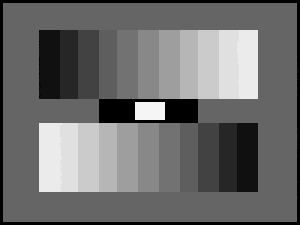Do you want to know about inspection tools and how these can be used? Go nowhere else as we have written down this article for the sake of your ease, so you don’t have to go anywhere else in search of the correct details.
We have done some extensive research, so you don’t need to waste your time knowing about it. Here, read all the facts interlinked with one of the most popular tools of inspection named the greyscale test. We hope you will have all the answers to your questions by the end of this article.
Grayscale Definition:
Greyscale is a synonym for achromatic. The range of monochromic colors ranges from pure white on the lightest end to pure black on the opposite end. We can say that it just has the information of the brightness and no other details about color; that is why maximum luminance is white, and zero glow is black; everything in mid-between is a shade of gray.
There is no other apparent color here, and the only shade is grey, where the darkest color of the shade is black, which is the complete absence of transmitted light. The lightest shade is white, the total reflection of light at all visible wavelengths. Here, the intermediate shades of gray are shown by equal brightness levels of the three primary colors: green, blue, and red for transmitted light, or similar amounts of the three primary pigments such as magenta, cyan, and yellow for reflected light.

Importance of Grayscale in Textile Industry
Usually, Grey Scale evaluation is done by analyzing dyed or weathered clothing samples with a range of sample tiles with different shades of gray on them. These scales have grades of 1-5, amplified by half grades with a Grey Scale grade of 5 being the best. A grade of 4 is good enough, with some customers accepting a grade of 3-4.
Un-weathered cloth is analyzed as the standard, with Grey Scale turned on in the tool, and it is found at the very end of the installed Index list, found under the Options header. The tool must be arranged in a different mode. While the time of being measured as the standard, the Grey Scale on the instrument states a 0.
If that similar piece of cloth is measured again, without weathering, the Grey Scale will show as a 5. This tells that there is no fading. However, the fabric is analyzed after numerous weathering periods in a sunny environment, and the Grey Scale is again evaluated against the stored, un-weathered standard. The cloth tint must show better than a 3-4 or a 4 Gray Scale rating for a better assessment.
What is Grayscale Shading?
Grayscale shading or testing analyzes variations in color shading of a product’s overall look. This is used to evaluate the alteration in the color that happens in colorfastness testing. This tool examines, analyzes, and compares the loss of color of a type by finding a half-step rating of 5, 4-5, 4, 3-4, 3, 2-3, 2, 1-2, and 1.
The alteration in color between the two types is evaluated against the sections on a greyscale, and a corresponding grade can be accessed. It varies from 5 being no color change to 1 being the lightest and most noticeable change in color. The types are only given a rating, and the pass or fail criteria are typically evaluated by specific industry standards or by the suppliers providing that material. This is a method to help decide how well the fabric will work within its planned service life.
How To Use Grayscale?
The grayscale tool is the best way to assess the accuracy of the shades. Most of the time, fabric industries use this tool to examine the quality of the colors, so we can say that it is for the sake of color staining, primarily utilized for analyzing staining after rubbing them by dry and wet white cotton cloths, in a lab.
The workers here mostly attach one white cotton cloth to the sample, and after that, they will combine them into a washing maker and check the result. The Inspector has to get ready two pieces of white cotton material: one wet and the other dry.
What Is Grayscale Test Chart?
The main goal of this chart is to see a variety of neutral grays from pure black to pure white. There will never be a color tint in any of the bars. Grayscale test charts are utilized for two applications, such as fine-tuning color balance in cameras. This is usually a more concise white balance, and the other is calibrating video and PC monitors.

What Is A Grayscale Value Chart?
When someone is getting to know how something can be drawn and painted, one of the best and most important ways is a grayscale value finder. With its help, a bar is classified into ten squares mainly of numerous shades of gray. The lightest light-white value is at one end, and the other has the darkest dark-black.
In between are many other dissimilar values of gray. The primary purpose of a grayscale value chart finder is to describe how to examine the lightness or darkness in a drawing or painting and make it simple to compare them to the shades you see in front of you.
Final Words
We hope that this article will be enough for you to get to know all about grayscale, which is one of the best tools to check out the range of colors. This is one of the best tools that help fabric industries to do their work in the best way possible. If you had never tried it before and wanted to go for it now, then this is the time. We can assure you that you will never regret it.
We have mentioned all the necessary details that one needs to know about this tool. Use it where needed, and let us know about your experience. We are looking forward to learning more about it from you. If you have any questions, feel free to ask as we would love to be at your assistance.
